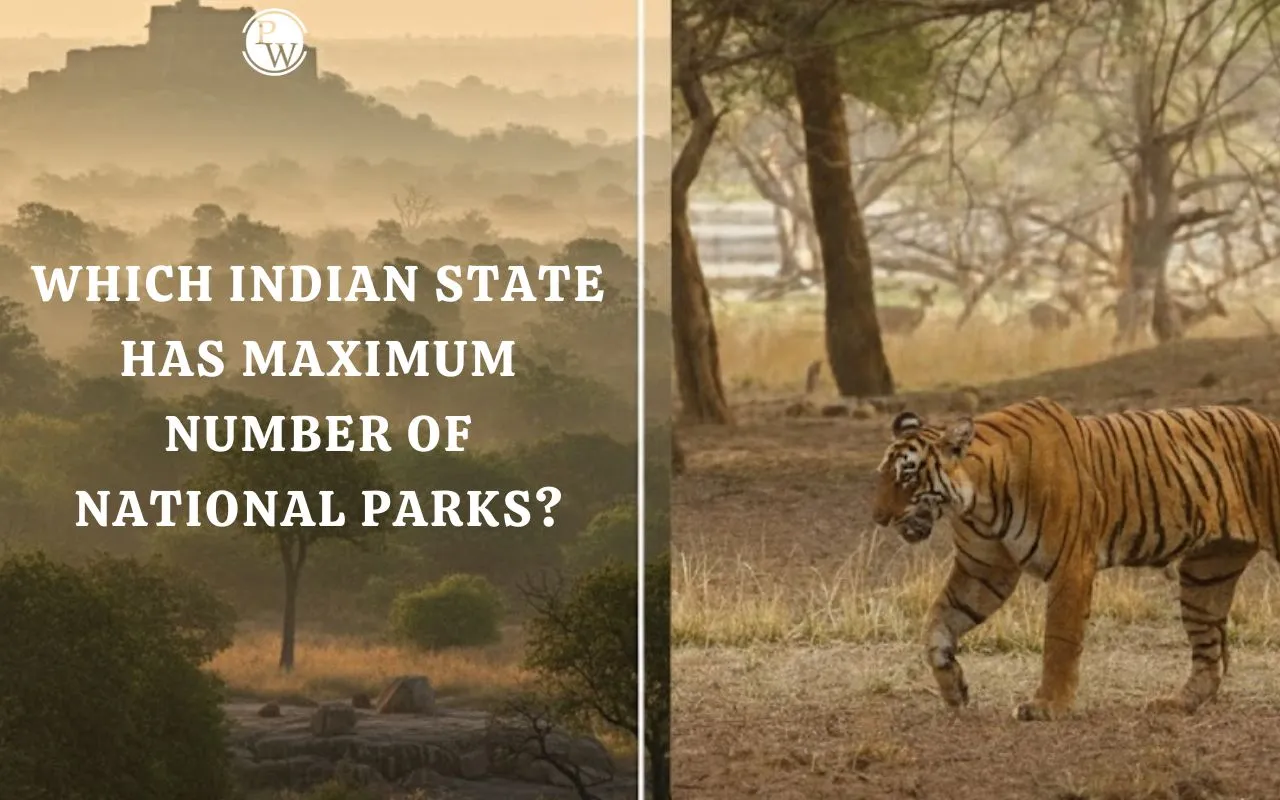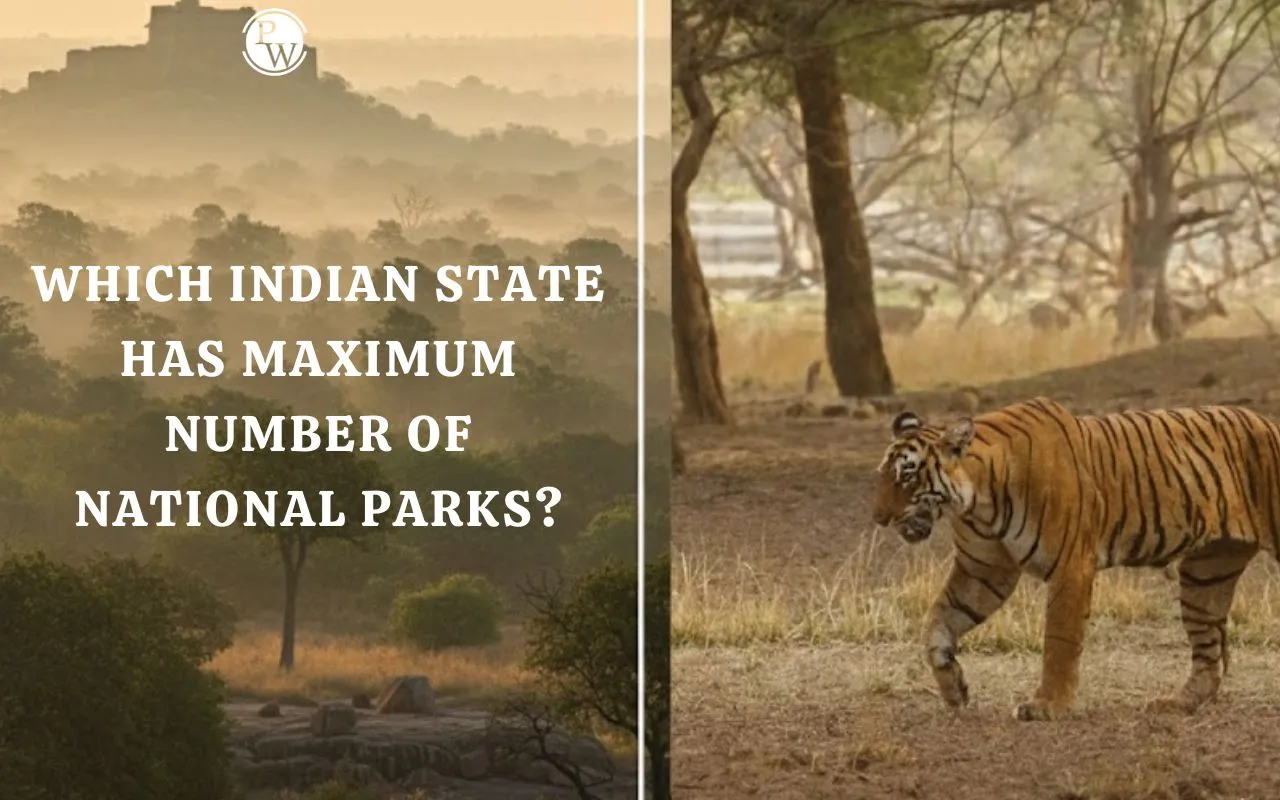

India’s national parks play a vital role in protecting wildlife, conserving forests, and preserving rare geological heritage. Different states contribute uniquely to this natural diversity, but one state stands out with the highest number of protected landscapes. After comparing the distribution of national parks across the country, it becomes clear that Madhya Pradesh holds the top position.
Madhya Pradesh has a total of 11 national parks, along with one proposed park. This information is officially documented in the Economic Survey 2023–24, which confirms the state’s leading status in biodiversity conservation.
These parks showcase rich wildlife, diverse landscapes, and important conservation efforts, including tiger reserves and fossil sites. From dense forests and deep valleys to rare species and ancient geological heritage, each park contributes significantly to India’s natural wealth. Together, they make Madhya Pradesh one of the most important biodiversity hotspots in the country.
List of National Parks in Madhya Pradesh
Madhya Pradesh stands out for its extensive network of national parks, each offering unique ecosystems and conservation value. These parks protect endangered species, preserve historic landscapes, and support major wildlife tourism circuits in India.
|
National Park |
Year Established |
Area (km²) |
|
Kanha National Park |
1955 |
940 |
|
Indira Priyadarshini Pench National Park |
1975 |
292.85 |
|
Fossil National Park |
1983 |
0.27 |
|
Dinosaur Fossils National Park |
2011 |
0.8974 |
|
Bandhavgarh National Park |
1968 |
448.85 |
|
Panna National Park |
1981 |
542.67 |
|
Madhav National Park |
1959 |
375.22 |
|
Satpura National Park |
1981 |
585.17 |
|
Sanjay National Park |
1981 |
466.88 |
|
Van Vihar National Park |
1979 |
4.45 |
|
Kuno National Park |
2018 |
748.761 |
About each National Park in Madhya Pradesh
Kanha National Park
Kanha is one of India’s largest and most famous tiger reserves. It is known for hard-ground barasingha, which was saved from extinction here. The park’s scenic meadows, sal forests, and wildlife diversity make it one of India’s best-managed national parks.
Indira Priyadarshini Pench National Park
Part of the Pench Tiger Reserve, this park inspired Kipling’s The Jungle Book. It is home to tigers, leopards, wild dogs, and a rich bird population. Its teak forests and river landscapes support excellent wildlife viewing.
Fossil National Park
This small park preserves plant fossils dating back millions of years. It provides valuable information about prehistoric vegetation. Visitors can see fossilized tree remains scattered across the region.
Dinosaur Fossils National Park
The park protects rare dinosaur eggs, fossils, and bones found in the region. It serves as an important site for paleontological research. The area offers insights into India’s dinosaur history.
Bandhavgarh National Park
Bandhavgarh is known for having one of the highest tiger densities in India. Its hilly terrain, fort ruins, and rich biodiversity attract wildlife photographers. The park is also home to leopards, deer, and over 250 bird species.
Panna National Park
Famous for the successful tiger reintroduction program, Panna is rich in wildlife and scenic beauty. The Ken River flowing through the park adds to its charm. It is known for gharials, tigers, and beautiful waterfalls.
Madhav National Park
Located near Shivpuri, this park combines forests, lakes, and historical structures. It is home to antelopes, leopards, and a variety of birds. The presence of Sakhya Sagar Lake enhances its ecological value.
Satpura National Park
A unique park offering walking, canoeing, and jeep safaris, Satpura is known for its rugged terrain. It shelters sloth bears, tigers, leopards, and giant squirrels. Its peaceful environment makes it ideal for nature lovers.
Sanjay National Park
Part of the Sanjay-Dubri Tiger Reserve, this park is rich in dense forests and wildlife. It houses tigers, leopards, elephants, and several bird species. Its remote location preserves its untouched natural beauty.
Van Vihar National Park
Located in Bhopal, Van Vihar is a unique urban national park and zoological area. It serves as a rescue center for injured or confiscated animals. Visitors can enjoy easy wildlife viewing along the lakefront.
Kuno National Park
Kuno gained national attention due to the Cheetah Reintroduction Project. With grassland habitats and diverse wildlife, it is ideal for cheetah conservation. The park also shelters leopards, chital, and other species.
